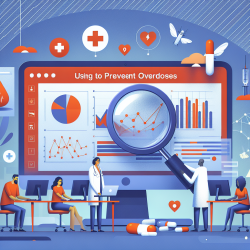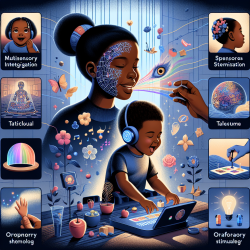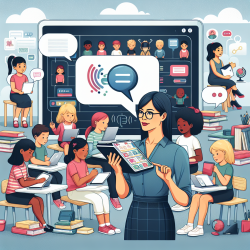Introduction: The Challenge of Communication Behind Masks
The COVID-19 pandemic has introduced unprecedented challenges in communication, particularly in educational settings where face masks have become a staple. The research article "Editorial: Language development behind the mask" explores how face masks affect language development and communication. This blog aims to guide practitioners in improving their skills by implementing research outcomes and encouraging further exploration.
The Impact of Face Masks on Language Development
Face masks, while essential for health and safety, pose a significant barrier to effective communication. They degrade the quality of the speech signal and obscure facial cues, particularly those related to the mouth. This has profound implications for language learners, especially children, who rely heavily on both auditory and visual cues for language acquisition.
Research has shown that the use of face masks can negatively impact speech understanding in children. For instance, Lalonde et al. found that surgical masks, fabric masks, and clear masks all affect speech processing in children with normal hearing and those with hearing loss. These findings underscore the importance of adapting communication strategies in educational settings to mitigate these effects.
Strategies for Practitioners: Enhancing Communication
To counteract the challenges posed by face masks, practitioners can employ several strategies:
- Utilize Clear Masks: Whenever possible, use clear masks to allow children to see the speaker's mouth, enhancing their ability to understand speech.
- Emphasize Contextual Cues: Encourage the use of semantic predictability and contextual information to aid comprehension. Schwarz et al. demonstrated that high semantic predictability can compensate for the effects of face masks in adults and partially in children.
- Enhance Non-Verbal Communication: Increase the use of gestures and body language to convey meaning and support verbal communication.
- Implement Technology: Leverage online therapy platforms like TinyEYE to provide consistent and clear auditory input, free from the physical barriers of masks.
Future Research Directions
While current research provides valuable insights, there is a need for further longitudinal studies to fully understand the long-term effects of face masks on language development. Practitioners are encouraged to stay informed about emerging research and adapt their approaches accordingly.
The research also highlights the importance of cross-cultural studies, as seen in Crimon et al.'s work on mask-wearing in nursery schools. Understanding how different cultures and educational systems adapt to these challenges can provide valuable lessons for practitioners worldwide.
Conclusion: Paving the Way for Better Outcomes
The challenges posed by face masks in educational settings are significant, but with the right strategies, practitioners can support language development effectively. By staying informed and adapting to new research findings, educators and therapists can create positive outcomes for children, even in these challenging times.
To read the original research paper, please follow this link: Editorial: Language development behind the mask.










